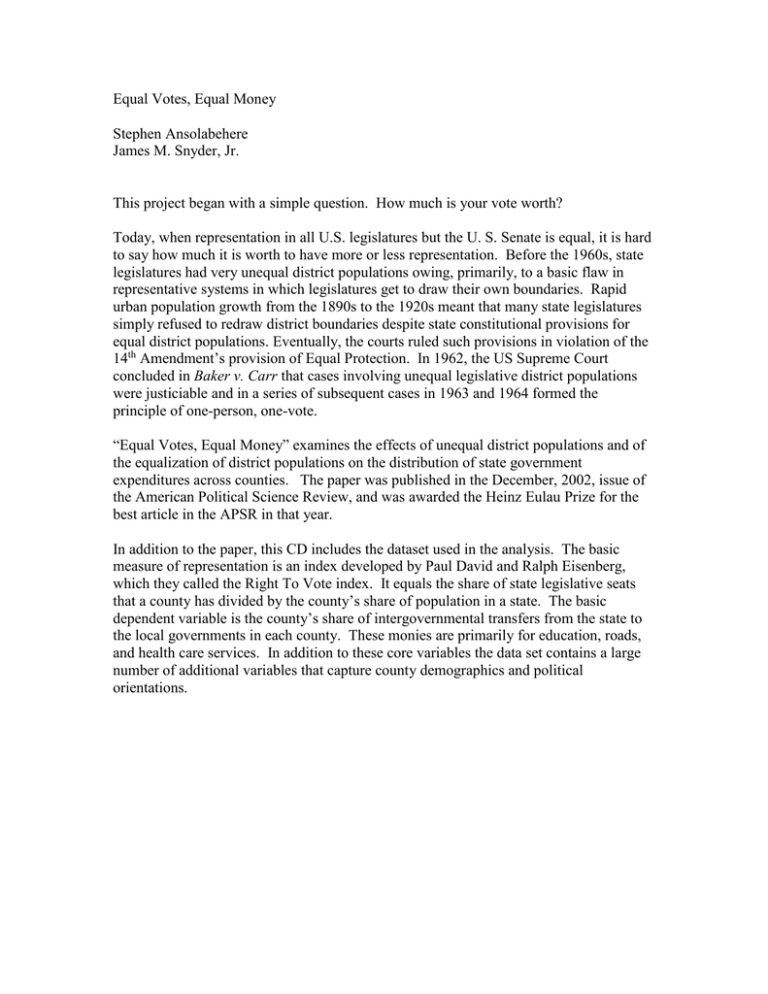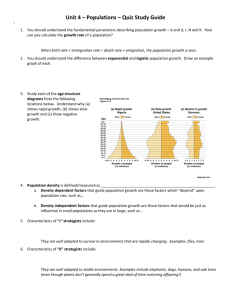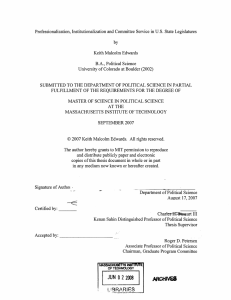Equal Votes, Equal Money Stephen Ansolabehere James M. Snyder, Jr.
advertisement

Equal Votes, Equal Money Stephen Ansolabehere James M. Snyder, Jr. This project began with a simple question. How much is your vote worth? Today, when representation in all U.S. legislatures but the U. S. Senate is equal, it is hard to say how much it is worth to have more or less representation. Before the 1960s, state legislatures had very unequal district populations owing, primarily, to a basic flaw in representative systems in which legislatures get to draw their own boundaries. Rapid urban population growth from the 1890s to the 1920s meant that many state legislatures simply refused to redraw district boundaries despite state constitutional provisions for equal district populations. Eventually, the courts ruled such provisions in violation of the 14th Amendment’s provision of Equal Protection. In 1962, the US Supreme Court concluded in Baker v. Carr that cases involving unequal legislative district populations were justiciable and in a series of subsequent cases in 1963 and 1964 formed the principle of one-person, one-vote. “Equal Votes, Equal Money” examines the effects of unequal district populations and of the equalization of district populations on the distribution of state government expenditures across counties. The paper was published in the December, 2002, issue of the American Political Science Review, and was awarded the Heinz Eulau Prize for the best article in the APSR in that year. In addition to the paper, this CD includes the dataset used in the analysis. The basic measure of representation is an index developed by Paul David and Ralph Eisenberg, which they called the Right To Vote index. It equals the share of state legislative seats that a county has divided by the county’s share of population in a state. The basic dependent variable is the county’s share of intergovernmental transfers from the state to the local governments in each county. These monies are primarily for education, roads, and health care services. In addition to these core variables the data set contains a large number of additional variables that capture county demographics and political orientations.






